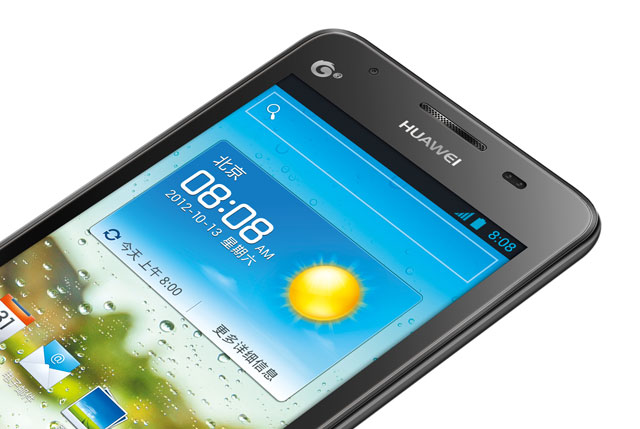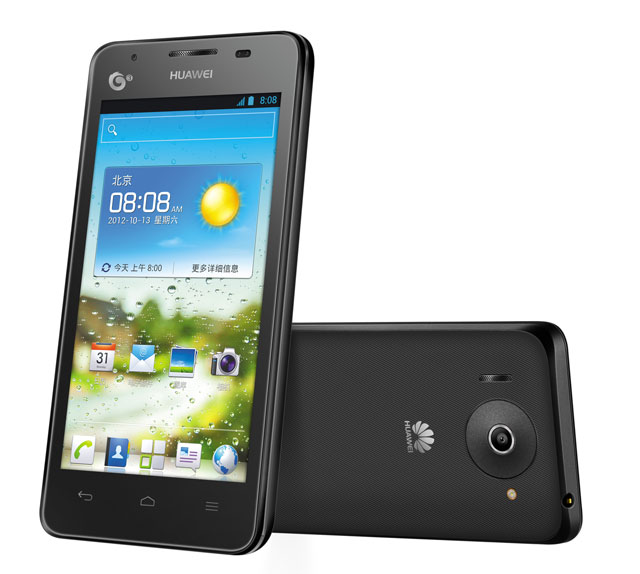
Huawei’s smartphone strategy is clear: cheap, Android-powered handsets made to look higher end than the hardware they contain and targeted at the budget conscious and first-time smartphone buyers. The Ascend G510 fits this mould perfectly.
The first thing you’ll notice when handling the G510 is how big it is. That’s partly because Huawei’s used a 4,5-inch display. That’s impressive for a phone that costs R1 999, though the resolution at 854×480 pixels is decidedly more in the budget phone category.
Despite the resolution, the screen looks good. It’s no full-HD, like the ones found in top-end Android phones, but that’s not surprising.
The phone comes with a not-great 1 700mAh battery, so this isn’t going to be an all-day heavy workhorse, but the rear cover is removable and the battery replaceable.
The rear cover is textured and the decision to use matte plastic makes the G510 look and feel more expensive than it is. However, good looks can’t hide the fact that, at 150g and 9,9mm thick, it’s neither the slimmest or the lightest handset. Somehow, though, the weight makes the G510 feel robust rather than cheap.
The G510 runs Android 4.1 “Jelly Bean” and, blessedly, Huawei hasn’t fiddled with it too much — or that’s what we thought at first. Like Samsung, the company has decided to squeeze every toggle imaginable into the notifications menu, but that’s not what irked us. Huawei, in what we can only assume is an attempt at simplicity, has removed the app drawer so that all apps now appear on the four home screens. Using folders helps dispel the cluttered feeling, but it seems a poor decision nevertheless.
A dual-core 1,2GHz processor and 512MB of RAM provide the G510’s muscle and, although that means the handset gets a little sluggish when taxed, it’s perfectly capable of handling most users’ everyday smartphone demands.
Huawei has included only 4GB of onboard storage, but like almost every other Android device, the G510 has a slot for a microSD card (which supports cards of up to 32GB in size). You’d think this would mean you can simply store everything on an SD card, but some apps aren’t transferable, meaning available space on the phone can fill up pretty quickly.

The G510 includes a 5-megapixel camera, which doesn’t sound like much these days, but considering that it produces images with a resolution of 2 592×1 940 pixels, it’s more than fine for the bulk of users. It’s not going to perform well in anything other than good light, but again, may we remind you that this phone costs less than two grand?
The primary camera includes autofocus, an LED flash and captures video at 720p — though, again, you’ll need good light to get passable results. There’s also a VGA secondary camera for video calling or taking terribly low-resolution self portraits.
Huawei’s included an FM radio in the G510, a feature that remains popular at the low end of the market and one that makes up for the relative lack of internal storage.
There’s also an NFC antenna and support for streaming media using the DLNA protocol, thoughtful additions that the handset could do without but that position it as a budget handset that’s cheap but still fully equipped.
Huawei’s bucked the Android trend by locating the volume rocker and lock/power button on the left hand side of the device. It takes a little getting used to if you’re right-handed, but the placement high up the edge is sensible. The buttons don’t feel particularly rugged, which has us wondering how well they’ll still behave after a year of use.
Ultimately, our only big gripe about the G510, apart from its perhaps being a little bulky, is the fact that the three capacitive buttons beneath the display — the standard “back”, “home” and “menu” — aren’t backlit. Overall, the G510 looks good and its price is fantastic. It’s a budget handset dressed as a high-end one, and that’s just fine by us. — (c) 2013 NewsCentral Media

